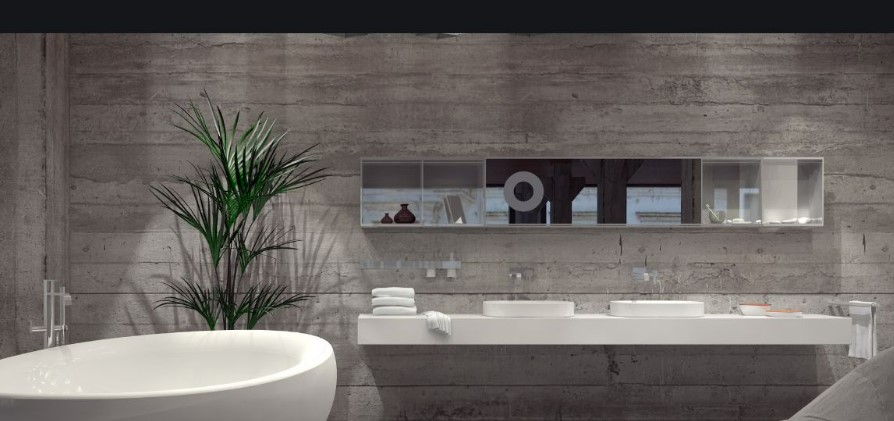Guest Post bt Hubert Dwight
You want your home to look and feel amazing.
After all, it’s where you spend the majority of your downtime.
That’s why it is worth putting some effort into your home design.
With some thought, care and attention, you can transform any room into a paradise in which you love to spend time.
Whether it’s your dining space, living room or bedroom – you want to feel at home, at ease and at peace. A, and interior design can achieve this with a few careful touches.
Bathroom interior design can sometimes get neglected, but this shouldn’t be the case.
There’s no reason your bathroom can’t look fantastic and have you feeling wonderful while bathing or getting ready for a night out.
In this helpful article, we’ll share all about monochrome majesty and how you can style a grey bathroom.
Read on to discover more.
Grey Tiles for a Neutral Palette
Opting for grey bathroom tiles will make sense if you’re going for a monochromatic, neutral feeling in your bathroom.
Grey is a surprisingly versatile colour, with lots of shades available.
Light grey can provide an impression of airy light and a delicate, soft feeling, whereas charcoal or dark grey can provide a more sombre yet gorgeous feeling.
If you’re doing a complete bathroom remodel, it’s worth spending some time to choose what shade of grey you want.
Visit some showrooms or browse online to get inspired.
Consider Wallpaper
While it is not traditionally used in modern bathrooms, some grey-toned wallpaper can add depth, texture and a gorgeous character to an otherwise bland bathroom.
You can opt for a bold, repeating pattern that can create the impression of space in a small bathroom.
If you don’t want a busy aesthetic, limit the wallpaper to a single wall, which you can then complement with paint or tiles on the other three walls.
Create Contrast with Versatile Colours
When using a neutral colour palette, such as grey, you can use accent colours in your other decoration choices to create a bold contrast.
This is particularly useful in a bathroom where you want to create a feeling of warmth and cleanliness.
One excellent way to achieve this contrast is to layer highlighting colours and pretty accessories that will uplift the overall palette.
For instance, having flashes of pink or deep reds, such as a toothbrush holder, plant pots or pieces of art on the wall, is a great choice.
Pair Grey with Natural Wood Tones
The cool grey shades pair excellently with a bathroom’s beauty, warmth and depth of natural timber.
Use wood tones to introduce textured layers, such as with panelled wood walls, a wooden cabinet, a wooden shower mat outside your shower or a timber tissue box on the vanity.
Go Bold with A Dark Grey Feature Wall
One way to make a strong statement in your bathroom is to paint a feature wall a dark charcoal grey or another dark grey tone.
This will create a bold impression and perfectly contrast with the lighter grey or other neutral tones in the room’s palette.
Other colours will appear striking and bright against this dark backdrop.
Bring a Splash of Green with Houseplants
Another excellent design choice for your bathroom is to offset the grey tones with splashes of green provided by house plants.
Some plants thrive in a damp, moist environment such as the bathroom.
Indoor ferns are a great choice, as are bromeliads, spider plants, mother-in-law’s tongue and Rhipsalis.
In addition to looking fabulous, the plants will scrub the air of impurities and generate oxygen in your bathroom.
Use Navy for Strong Contrasting Vibes
A deep, rich navy will spruce up a neutral grey colour scheme.
This will work perfectly if you’re going for a period home aesthetic.
can opt for a navy feature wall or paint some wood panels in a rich navy colour.
Use Mosaic Patterned Tiles
One awesome bathroom design hack for grey-toned rooms is to use grey mosaic tiles for the flooring.
These patterned tiles will look fantastic and provide depth and space to your bathroom.
You can flip this idea with plain grey tiles for your flooring and mosaic-tiled walls.
Use Your Towels to Contrast
Finally, another design hack you can use for grey bathrooms is to choose brightly coloured hand and body towels to introduce splashes of colour.
Rich reds, bright, vibrant yellows, oranges and even forest green can achieve this vibe.
Make sure you stock up on these, so while the used towels are in the wash, you can replace them with fresh, bright, clean ones.
A Grey Bathroom Summary
This helpful article has shared about monochrome majesty and how to style a grey bathroom.
Use this article for inspiration when planning your bathroom remodel or redesign, and prepare to be awed by your sleek new space.
